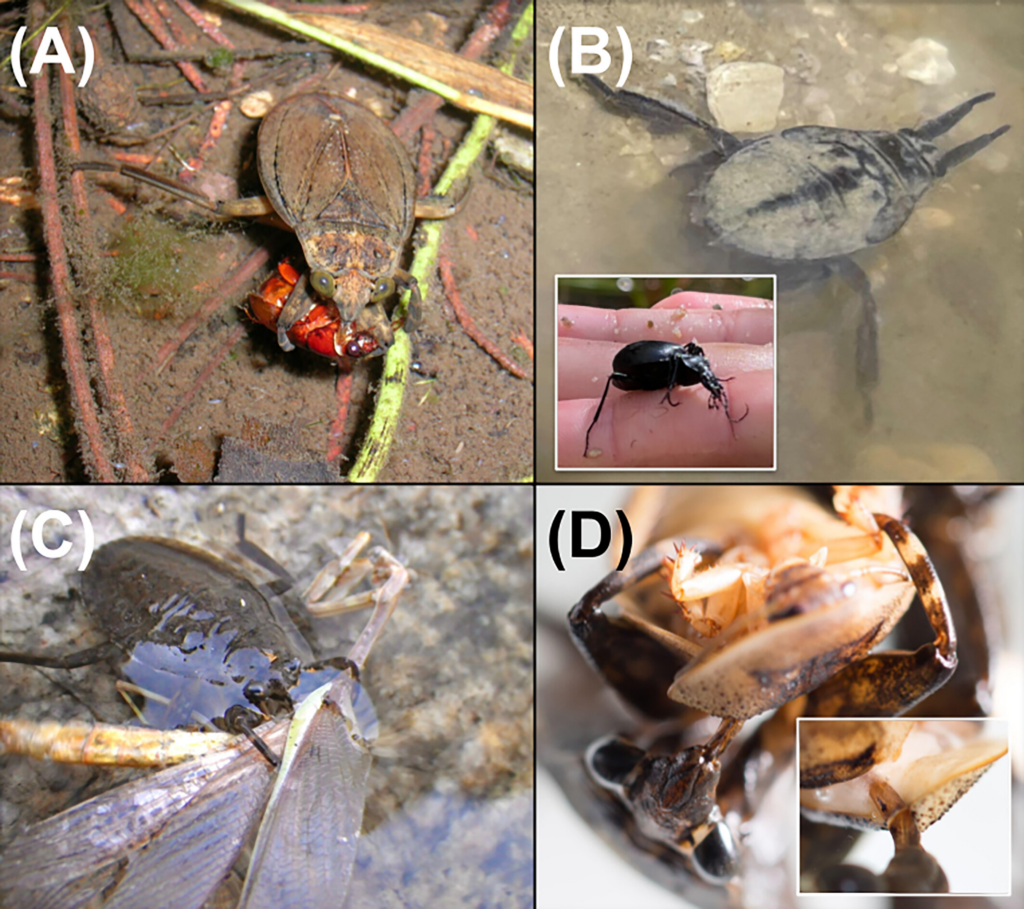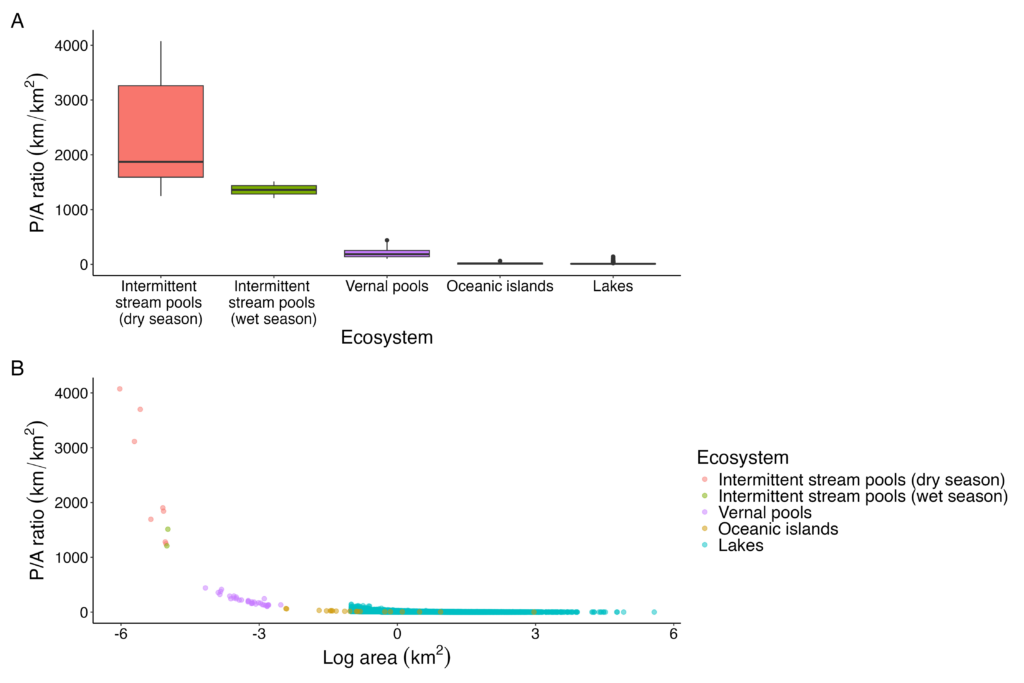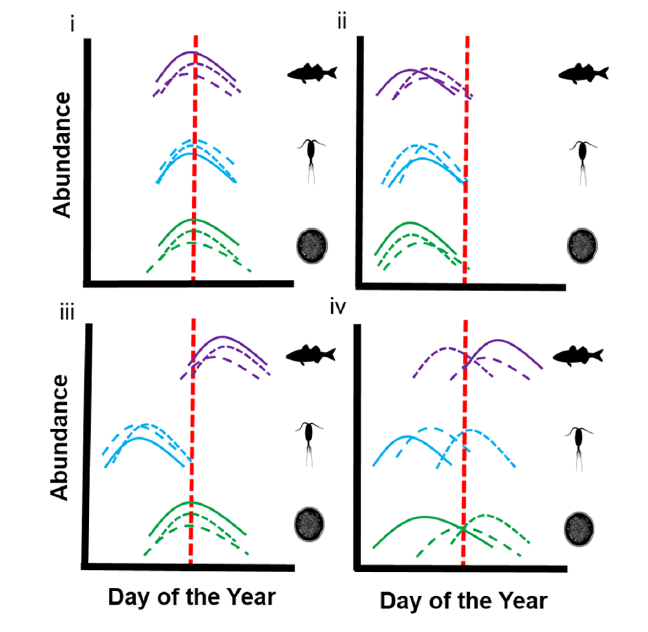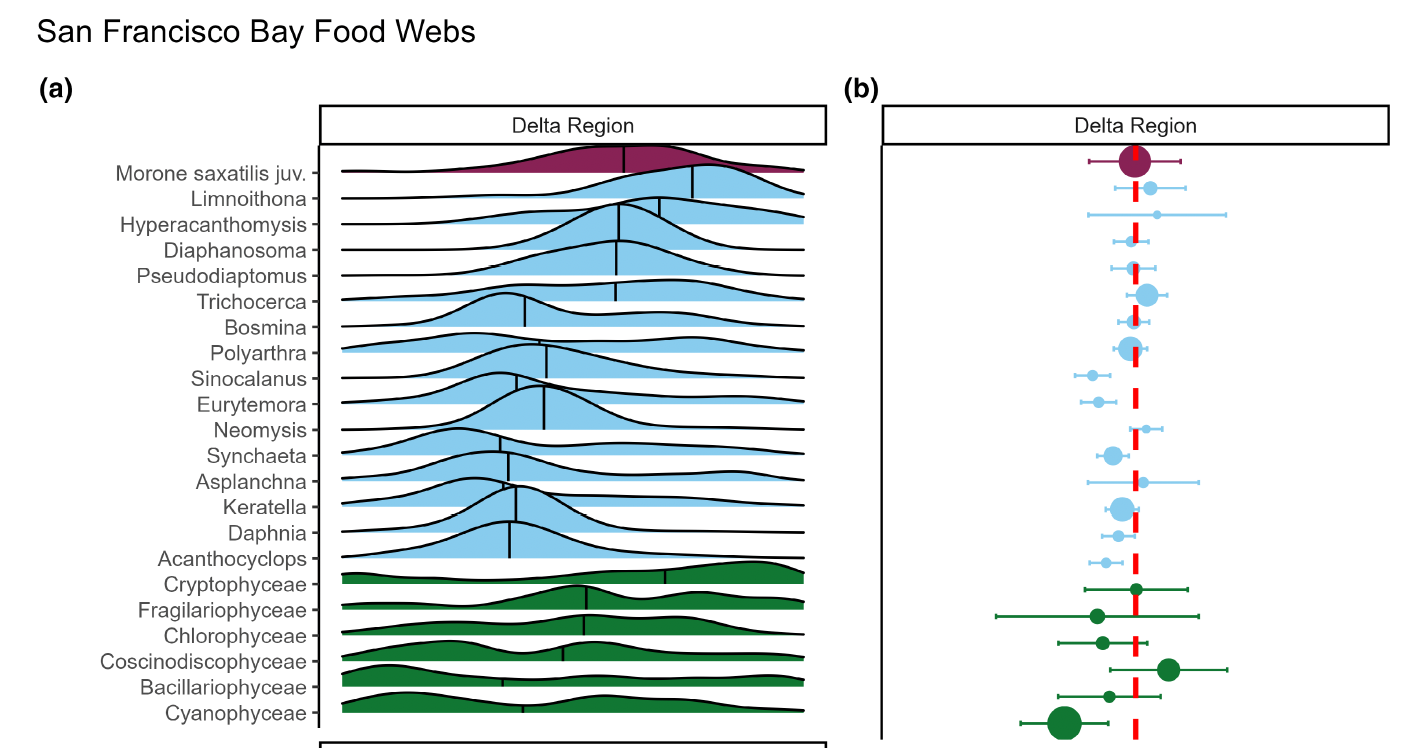Former Ruhi lab undergraduate Amin al-Jamal has published a new paper in Ecology: Aquatic top predator prefers terrestrial prey in an intermittent stream! Meet the belostomatid giant water bug Abedus indentatus, the dominant predator in fishless sections of Chalone Creek, Pinnacles National Park, California. Despite living in the water, the study found that water bugs seem to prefer prey from the terrestrial environment. Isolated pools in drying rivers have incredibly high perimeter to area (P/A) ratios, and aquatic predators such as giant water bugs enjoy the increased influx of terrestrial prey! On top of that, prey that fall into the water are less equipped to deal with an aquatic predator. The double whammy of high P/A ratios and increased prey susceptibility in intermittent streams might facilitate this cool feeding preference!





